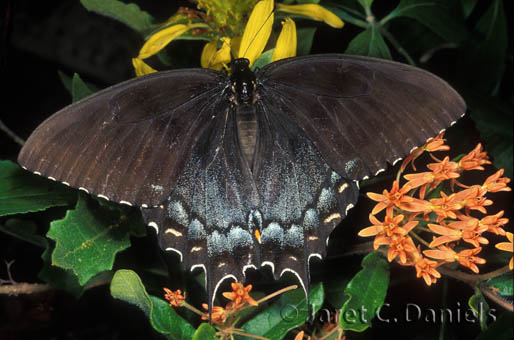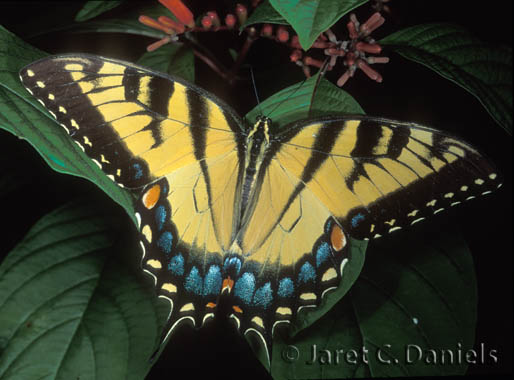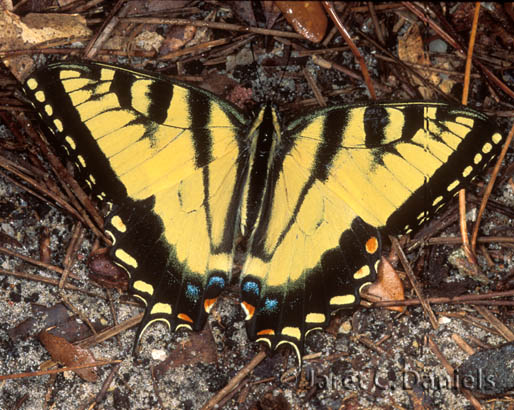- Family name: Papilionidae/Swallowtails
- General description: Male wings yellow with prominent black tiger-like stripes and wide black borers; hindwings with yellow marginal spots and single black tail. Thorax and abdomen yellow with black stripes. Female has two forms. Yellow form as male but with increased blue scaling in black hindwing border. Dark form black or with faint stripes; hindwing with blue scaling and yellow marginal spots. Ventral hindwing with faint darker stripes.
- Field Marks: Male: single hindwing tail; yellow wings with black stripes and borders; abdomen with black lateral stripe Female: hindwing with blue scaling in black border; dark-form female black with faint darker stripes, most noticeable on ventral hindwing
- Sexes: appear different

- Wingspan: 85-140 mm
- Life Cycle: Egg: green, spherical, laid singly on host leaves Mature larva: Green with rows of small blue spots; thorax enlarged with two prominent yellow-rimmed black eyespots and a narrow black and yellow transverse band. Chrysalis: mottled gray-brown
- Number of Generations: Three or more
- Flight Season: February-November
- Abundance: Common
- Habitat: Woodlands, forest margins, broadleaf swamps, waterways, parks, gardens, roadsides, pastures, and meadows

- Larval Host Plants: Wild cherry (Prunus serotina), sweet bay (Magnolia virginiana), white ash (Fraxinus americana)
- Similar Species: No similar species
- Additional Information: Adults have high somewhat gliding flight and feed with their wings outstretched (not continuously fluttering).
- Range in Florida
 The Florida Wildflowers & Butterflies projects at the Florida Museum are sponsored in part by the State of Florida and the Florida Wildflower Foundation, Inc.
The Florida Wildflowers & Butterflies projects at the Florida Museum are sponsored in part by the State of Florida and the Florida Wildflower Foundation, Inc.
